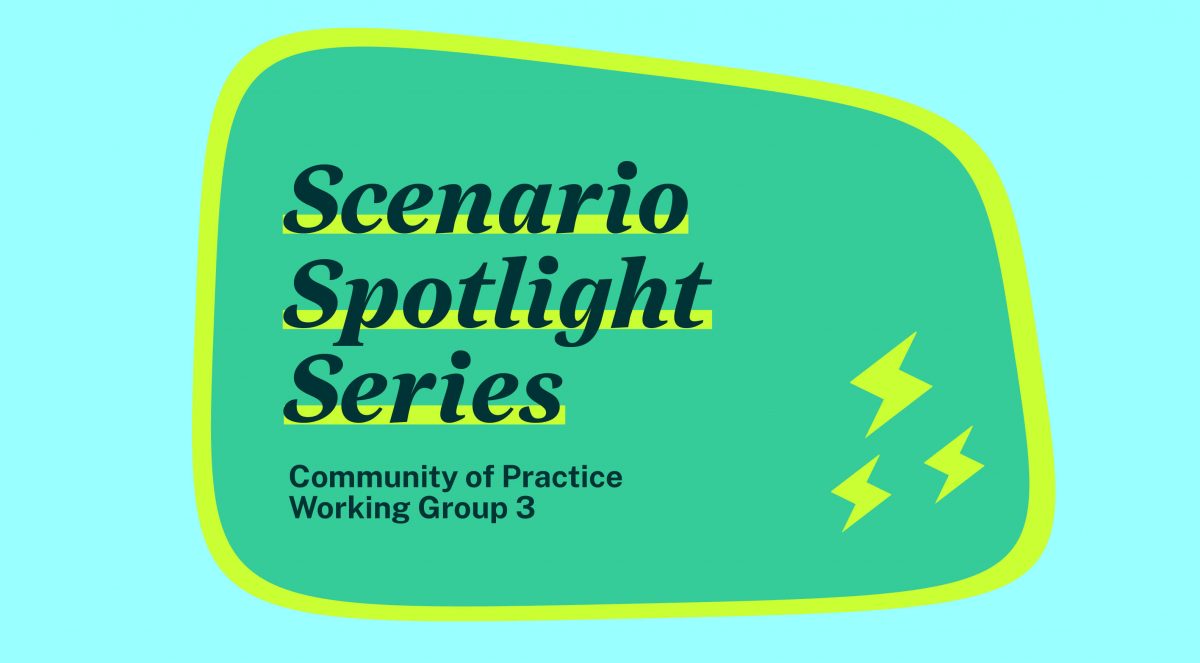How can we best understand the future of the spaces and places we are shaping? Where can we look for ideas, insights, and knowledge?
These were the questions posed by Kevin Murray (Director, Kevin Murray Associates) at the launch of our recent Community of Practice series. Through the Scenario Spotlight sessions, we discovered how scenario planning can help us explore uncertainty, test ideas, and shape more resilient urban futures.
What is Scenario Planning?
As cities grapple with complex environmental and social challenges, scenario planning offers a structured way to explore potential futures, from the probable to the visionary. It is a tool to help decision-makers navigate uncertainty and support more resilient, inclusive urban transitions.
To explore this further, Urban ReLeaf’s Community of Practice Working Group 3 hosted an online series highlighting the breadth and depth of scenario planning in driving grey-to-green urban transitions. Held over three weeks in June and July, each session examined the use of scenario planning in practice, research, and the public sector, drawing on diverse experiences from across the UK and Europe.
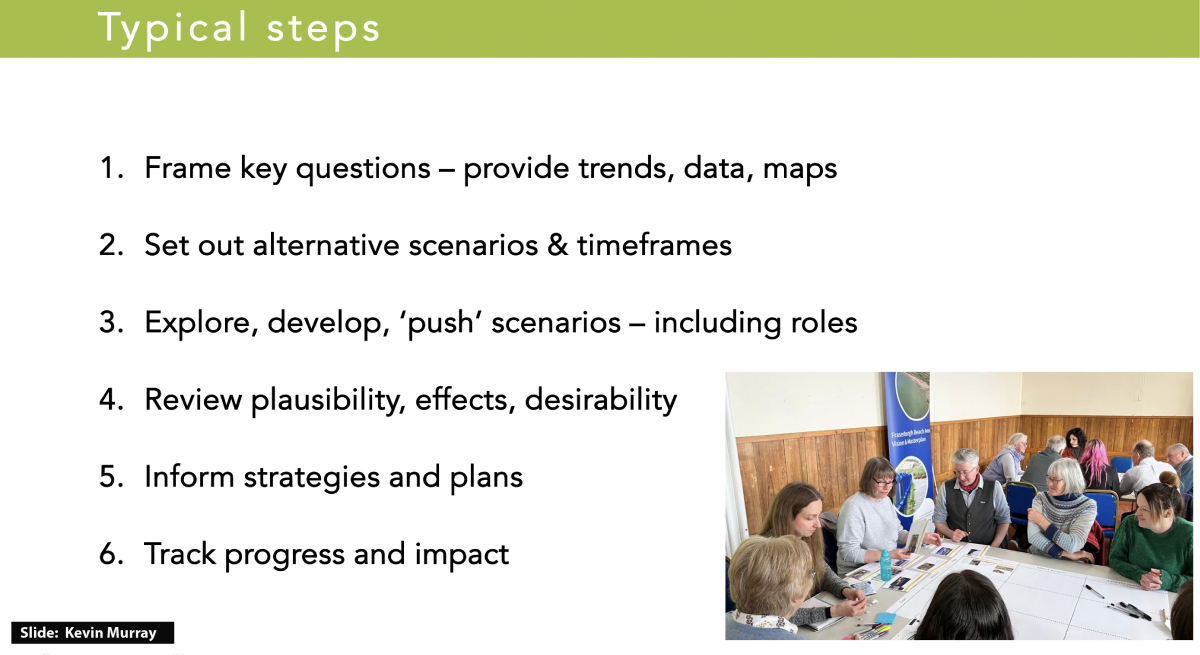
Slide Credits: Kevin Murray, Director at Kevin Murray Associates
No One-Size-Fits-All
Throughout the series we heard from a diversity of speakers, topics and tools ranging from using Minecraft as a “serious game” for young people to explore climate resilience in Ireland, to national scale digital twins to inform land-use scenarios to meet net zero targets. It was evident that scenario planning cannot follow a one-size-fits-all model.
“Games can be simulations that help us to test scenarios.” – Dr. Ítalo de Sena
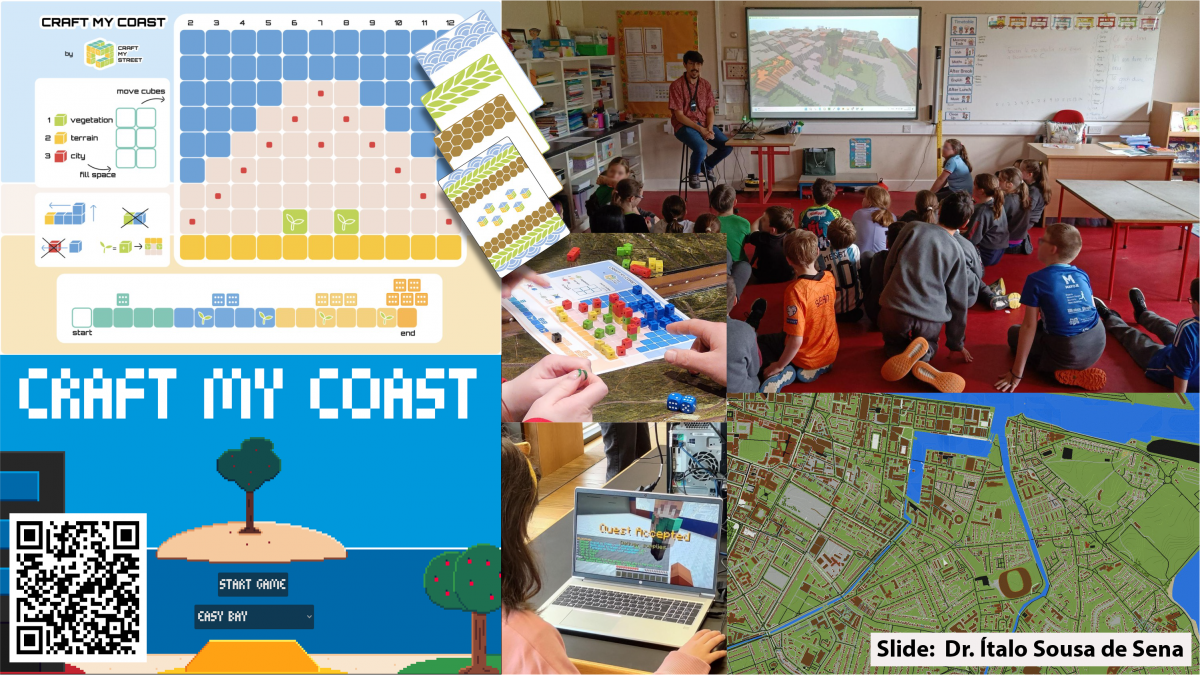
Slide Credit: Dr. Ítalo de Sena, Craft My Street / HeritACT
Involving Citizens
A recurring theme across all sessions was the role of citizens in scenarios. Dr. Ítalo de Sena’s work engaging young people in climate resilience showed how serious games can give agency to seldom heard voices through true co-design.
In Glasgow, ‘postcards from the future’ helped communities picture and share their visions for what the city could become, as described by Graham Ross. Albin Hunia, even showed that data-driven tools such as digital twins can use citizen science data. However, Kevin Murray cautioned that involving citizens in every scenario may not always be appropriate, particularly when exploring extreme futures that could lead to confusion or misunderstanding.
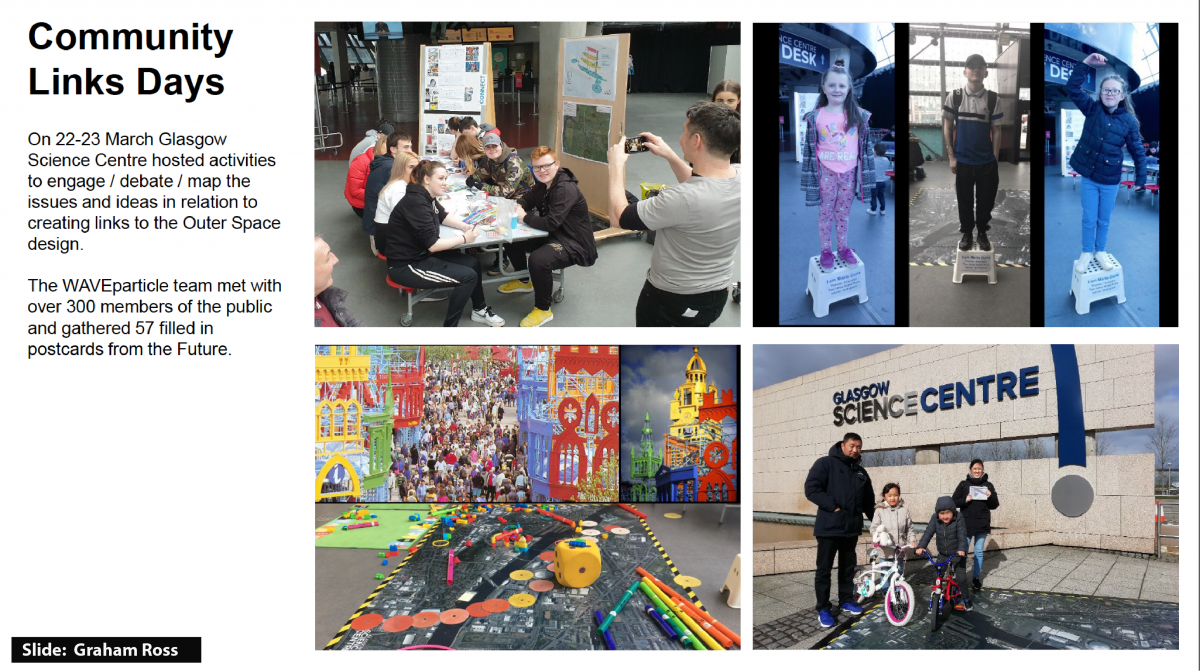
Slide Credits: Graham Ross, Austin-Smith:Lord / WAVEparticle
Turning Scenarios into Real Impact
“Scenarios are a means, not an end in themselves, and the place outcomes are what really matter” – Kevin Murray
Scenario planning is most powerful when it leads to tangible impact. Visualisation tools, such as those presented by Dr. Sara Barron, help to communicate the trade-offs and possibilities in urban planning. These tools make complex topics, such as future neighbourhood urban forests, more accessible and engaging for the public.
Across all sessions, speakers emphasised that the goal is not to create perfect predictions, but to spark informed, inclusive planning conversations, and ultimately to shape places in ways that better reflect community needs. Like any process, the outcomes should guide decisions, not dictate them.
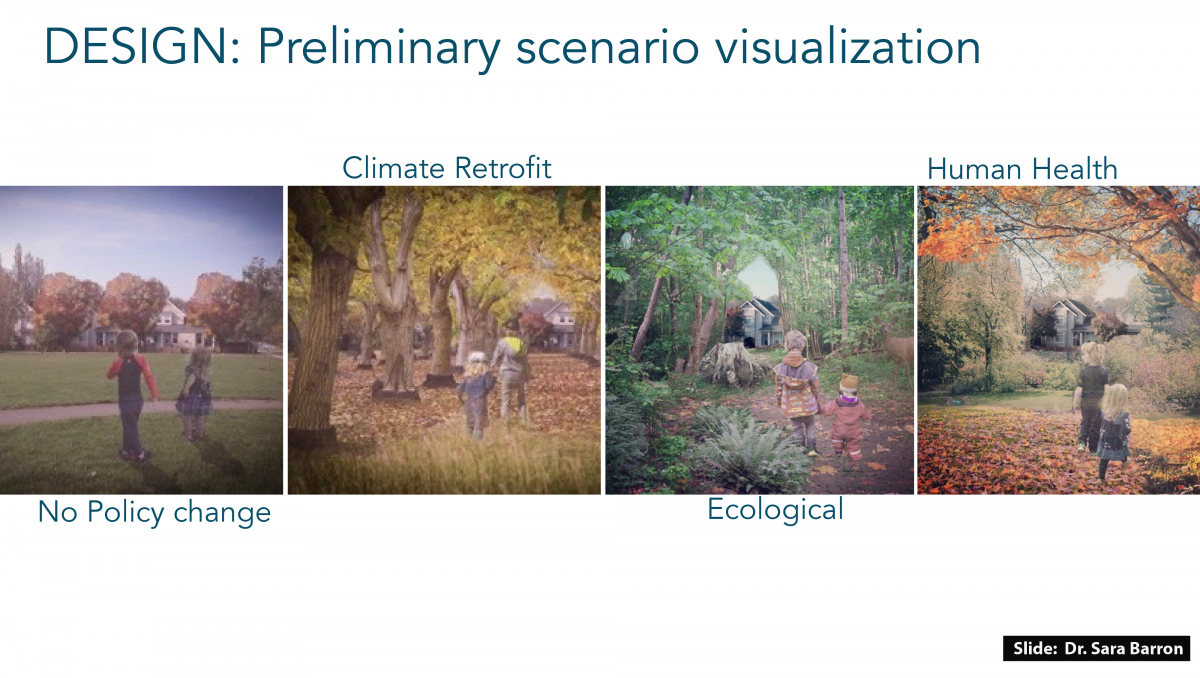
Slide Credit: Dr. Sara Barron
About the Community of Practice – Working Group 3
Urban planning often overlooks diverse citizen needs, slowing progress toward greener, fairer cities. The Urban ReLeaf community of practice working group 3, bridges theory and practice in Nature-based Solutions and Blue-Green Infrastructure through Foresight and Scenario Planning, sharing tools, case studies, and approaches to co-creating more inclusive planning.
Want to get involved? Email us: urbanreleaf@dundee.ac.uk
